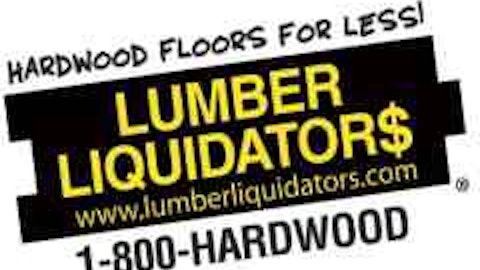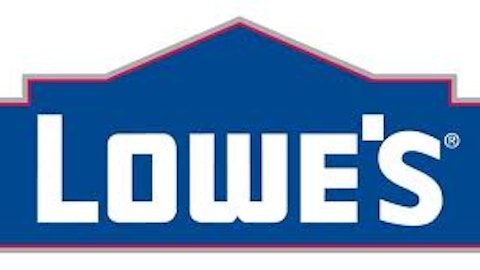The housing recovery currently provides the catalyst for the share price gains of home improvement retailers, The Home Depot, Inc. (NYSE:HD), Lowe’s Companies, Inc. (NYSE:LOW), and Lumber Liquidators Holdings Inc (NYSE:LL). However, a company with good fundamentals will provide superior returns in good times and bad. Weighing the fundamentals from the perspective of pros and cons can help you decide if these companies can do just that.

Head of the pack – The Home Depot, Inc. (NYSE:HD) dominates in terms of size with 2,256 stores versus 1,754 for Lowe’s and 290 stores for Lumber Liquidators.
Cash – Home Depot also possesses the most cash at $2.5 billion exceeding Lowe’s Companies, Inc. (NYSE:LOW) $666 million and Lumber Liquidators’ $64 million. Home Depot increased free cash flow 4% in 2012.
Merchandise – Home Depot’s merchandise performing “above average” consisted of “tools, lumber, electrical, outdoor garden, lighting, indoor garden, and décor” according to its latest earnings call. It looks like The Home Depot, Inc. (NYSE:HD) became the go to place for redecorating your lawn and remodeling your house.
Fundamentals – The Home Depot, Inc. (NYSE:HD) improved sales and net income 6% and 17% respectively. Operating and gross margins each increased 10% driven by supply chain efficiencies and a stark reduction in shrink or the level of theft.
Home Depot cons
Stock buybacks – Home Depot plans to utilize $4.5 billion in “excess cash” for share repurchases. In addition, due to the attractiveness of low interest rates, Home Depot plans to take on debt in order to do so. Home Depot’s long term debt to equity ratio of 53% already exceeds my personal preference of 50%.
Lowe’s pros
Customer service – Lowe’s Companies, Inc. (NYSE:LOW) found a deeper appreciation for customer service in 2012. Its management team discovered that an increase in store labor hours devoted to customer service on the weekend translated into more customers walking out the door with purchased merchandise or “conversions” in store speak. In the last earnings call (sign in required), Lowe’s management gave indication of adding part-time labor hours devoted to customer service throughout the middle of the week.
Inventory – Lowe’s management decided to give a razor sharp focus on inventory management in an effort to further enhance sales during the housing recovery. Lowe’s hired a new merchandising executive with experience in home improvement products at Husqvarna and General Electric, Mike Jones, to spearhead the effort.
Lowe’s Companies, Inc. (NYSE:LOW) wants its inventory tailored to the particular regional and holiday tastes in each of its stores. So far its efforts paid off with an operating and profit margin boost of 7% and 6% respectively. Lowe’s will continue its inventory reset efforts in 2013 providing a future opportunity for margin expansions.
Merchandise – While The Home Depot, Inc. (NYSE:HD)’s merchandise strength leaned more towards gardening and décor, Lowe’s leaned a little more towards the utilitarian according to its latest earnings call: “lumber, cabinets and countertops, seasonal living, plumbing, tools and outdoor power equipment and home fashion, storage and cleaning” performed better than usual.
Lowe’s cons
Cash – Lowe’s operating cash flow declined 14%, but lower capital expenditures helped the company improve its free cash flow 4%. Lowe’s cash to stockholder’s equity resides at 5%, the lowest of the three companies.
Fundamentals – Lowe’s Companies, Inc. (NYSE:LOW) possesses the weakest fundamentals of the three companies discussed. Its revenue grew less than 1% in 2012. Lowe’s sports a long term debt to equity ratio of 65%.
The pro to this con lies in Lowe’s turnaround efforts in inventory and customer service as evidenced by expanding margins.
Lumber Liquidators pros
Cash – Lumber Liquidators possesses the most cash relative to its stockholder’s equity with its $64 million dollars representing 27%. Free cash flow expanded a whopping 25% due to lower capital expenditures stemming from infrastructure completions.
Fundamentals – Revenue and net income increased 19% and 79% respectively. Lumber Liquidators possesses no long term interest bearing debt.
Specialized products – Lumber Liquidators specializes in hardwood flooring giving the company the ability to build a highly specialized expertise in the market.
Opportunities for expansion – Lumber liquidators’ 290 stores only make up 10% of the market according to its latest earnings call (sign in required). Lumber Liquidators mostly competes with smaller specialty stores with less purchasing power.
Supply chain – Lumber Liquidators maintains good relationships with its mills and suppliers and buys direct wherever possible which saves on cost.
Lumber Liquidators Cons
High valuation – As of this writing, Lumber Liquidators’ P/E ratio stood at 39 exceeding Home Depot’s 23 and Lowe’s 22. Markets generally treat companies with high P/E ratios with even more disdain during a correction. Lumber Liquidators will most likely suffer more than others.
Product diversity – In the last earnings call, an analyst expressed concern about hardwood flooring going out of fashion. If this occurred, Lumber Liquidators and its shareholders could face ruin.
Conclusion
On the whole, all three of the companies deserve a place in your portfolio for different reasons. The Home Depot, Inc. (NYSE:HD)represents the dominant player. Lowe’s Companies, Inc. (NYSE:LOW) constitutes the turnaround play. Lumber Liquidators appeals from a small hot growth perspective. The pros outweigh the cons on all three companies.
The article Pros and Cons of Owning These Home Improvement Retailers originally appeared on Fool.com and is written by William Bias.
Copyright © 1995 – 2013 The Motley Fool, LLC. All rights reserved. The Motley Fool has a disclosure policy.


